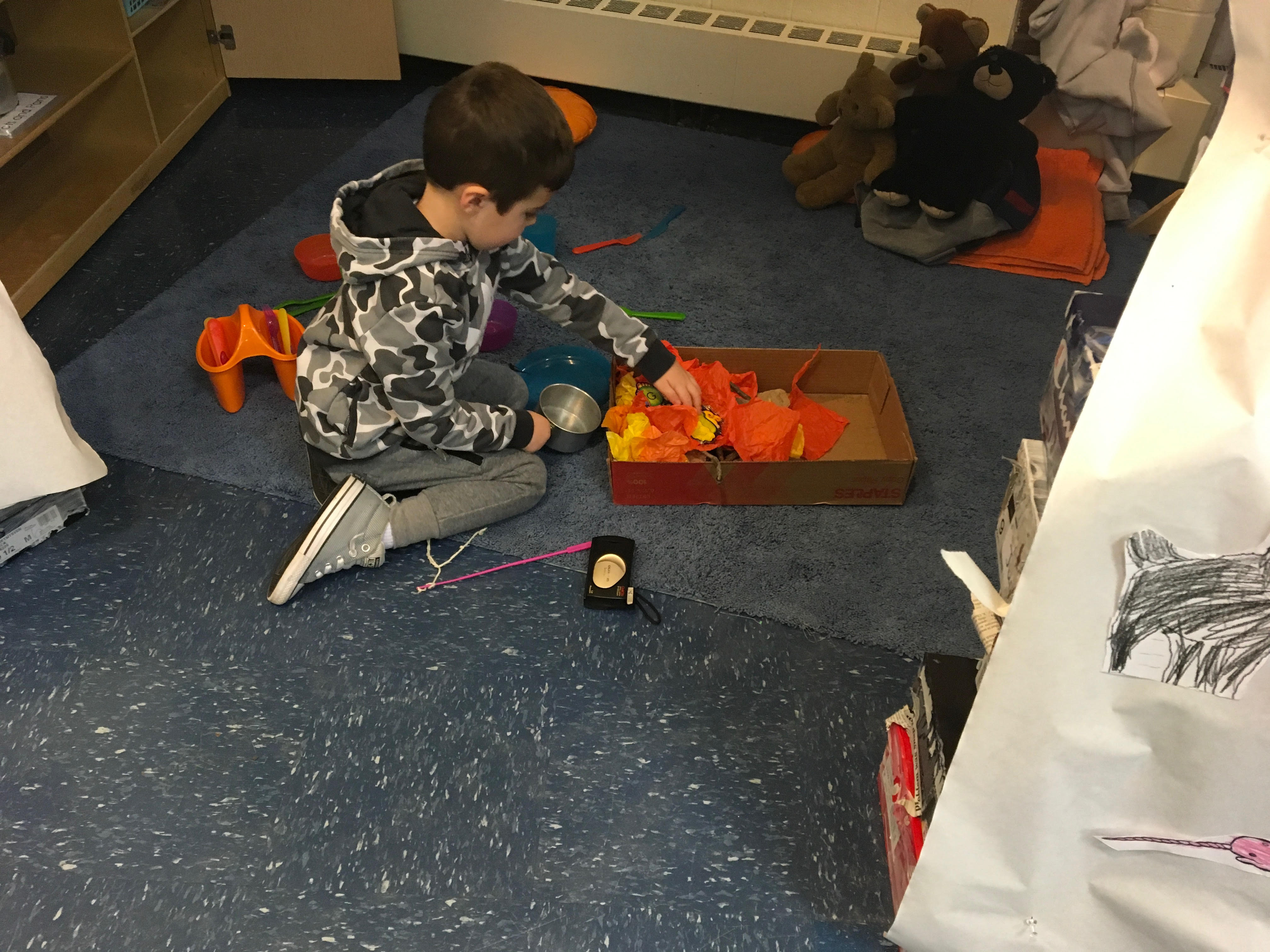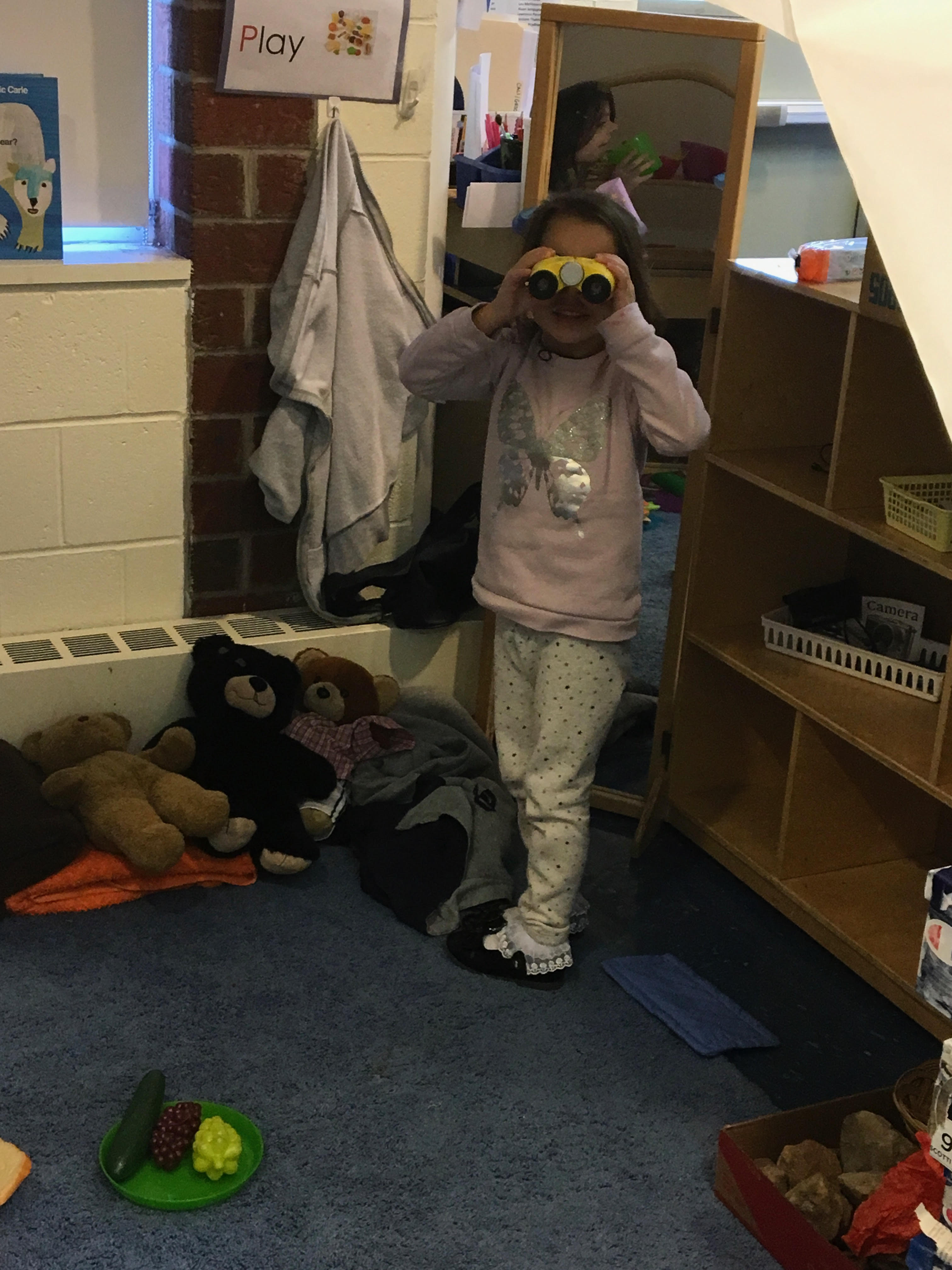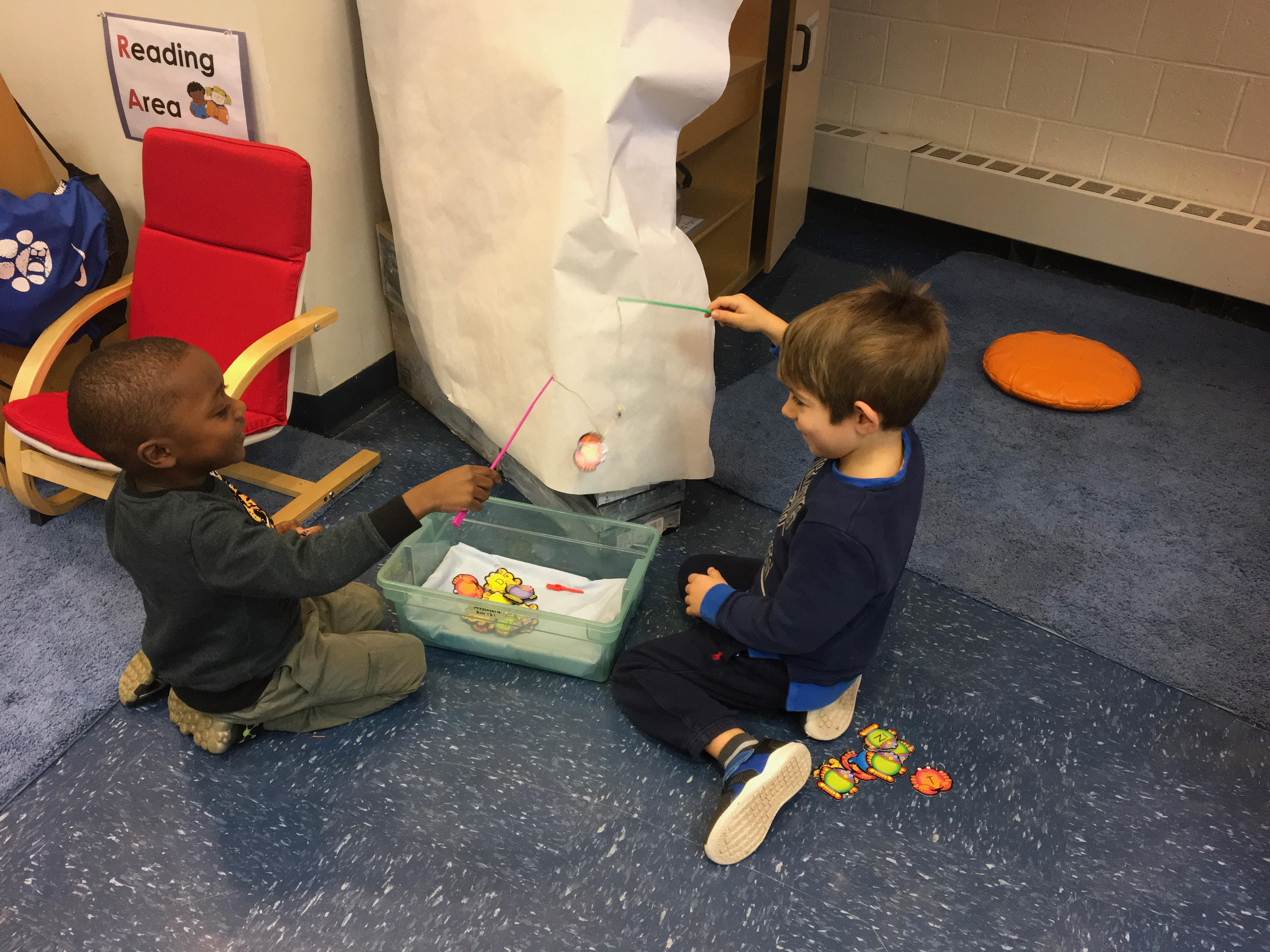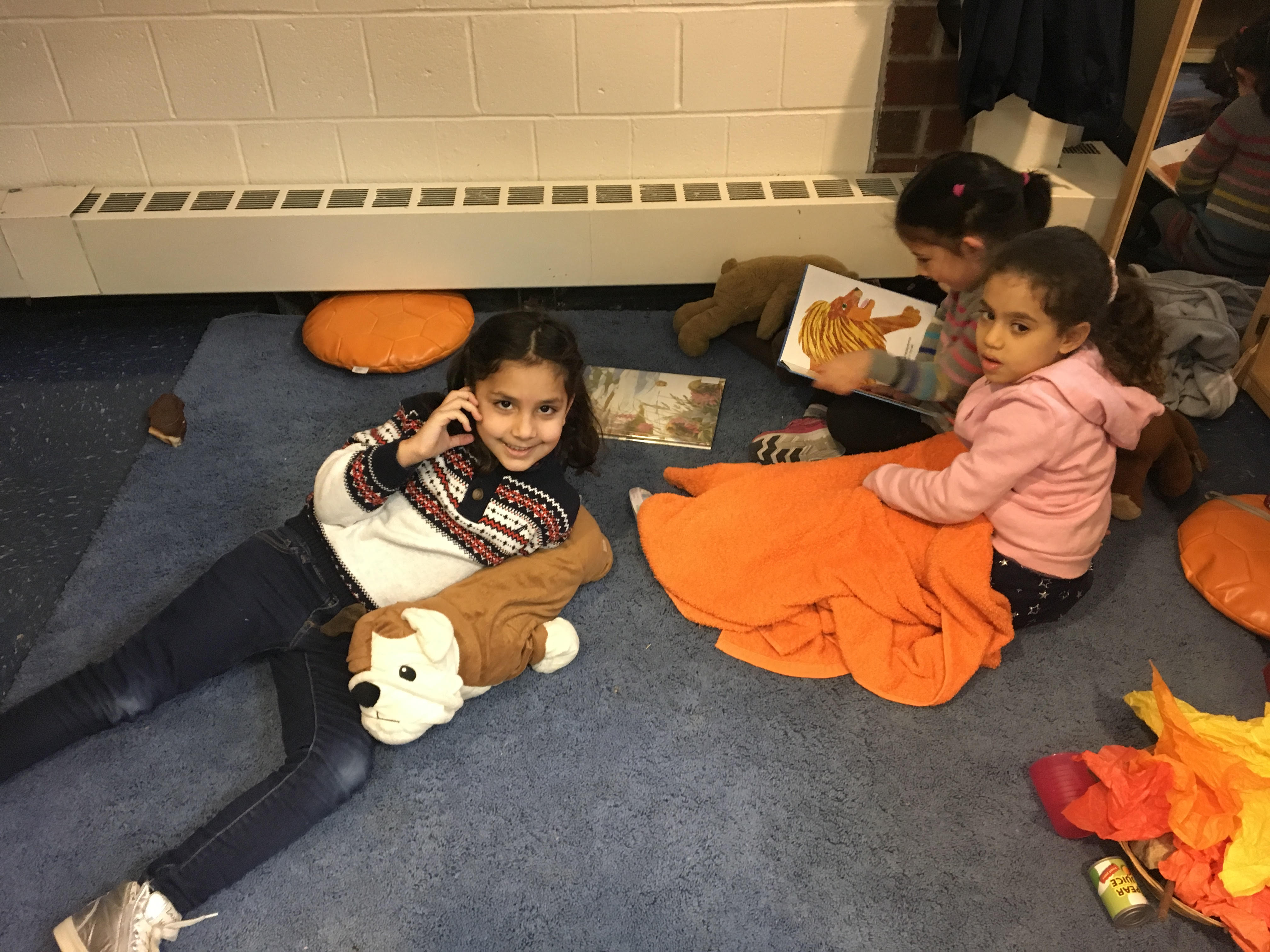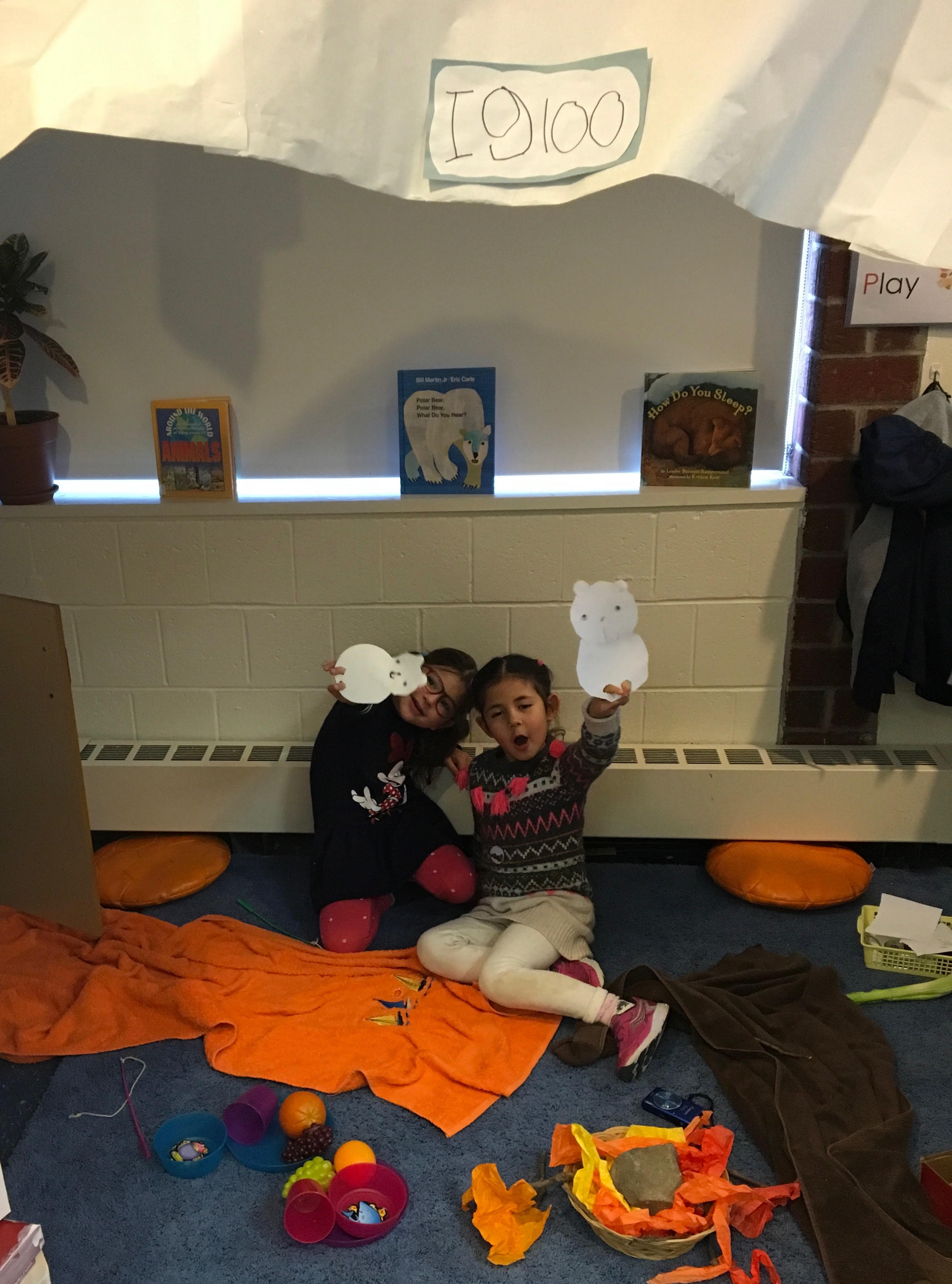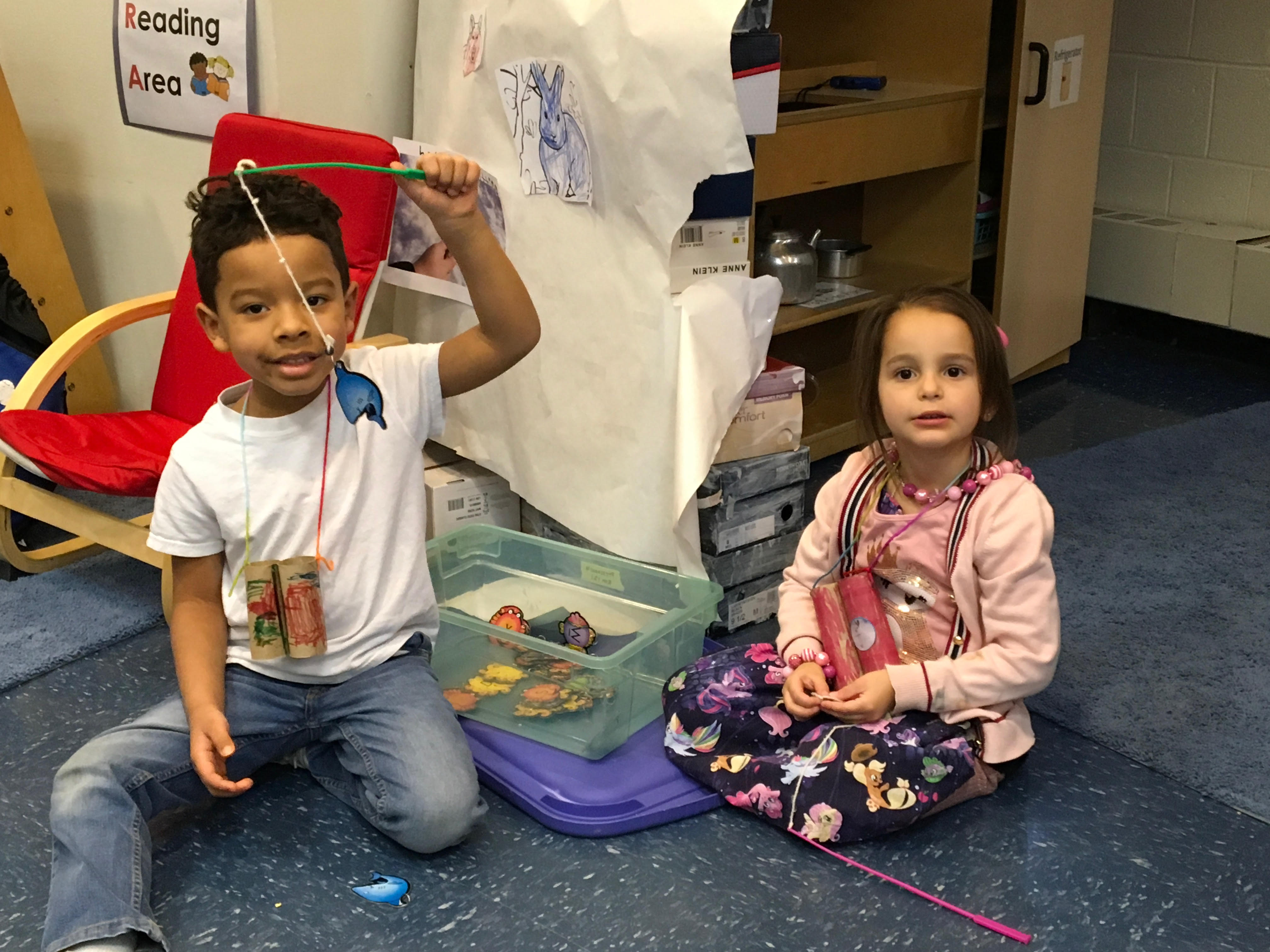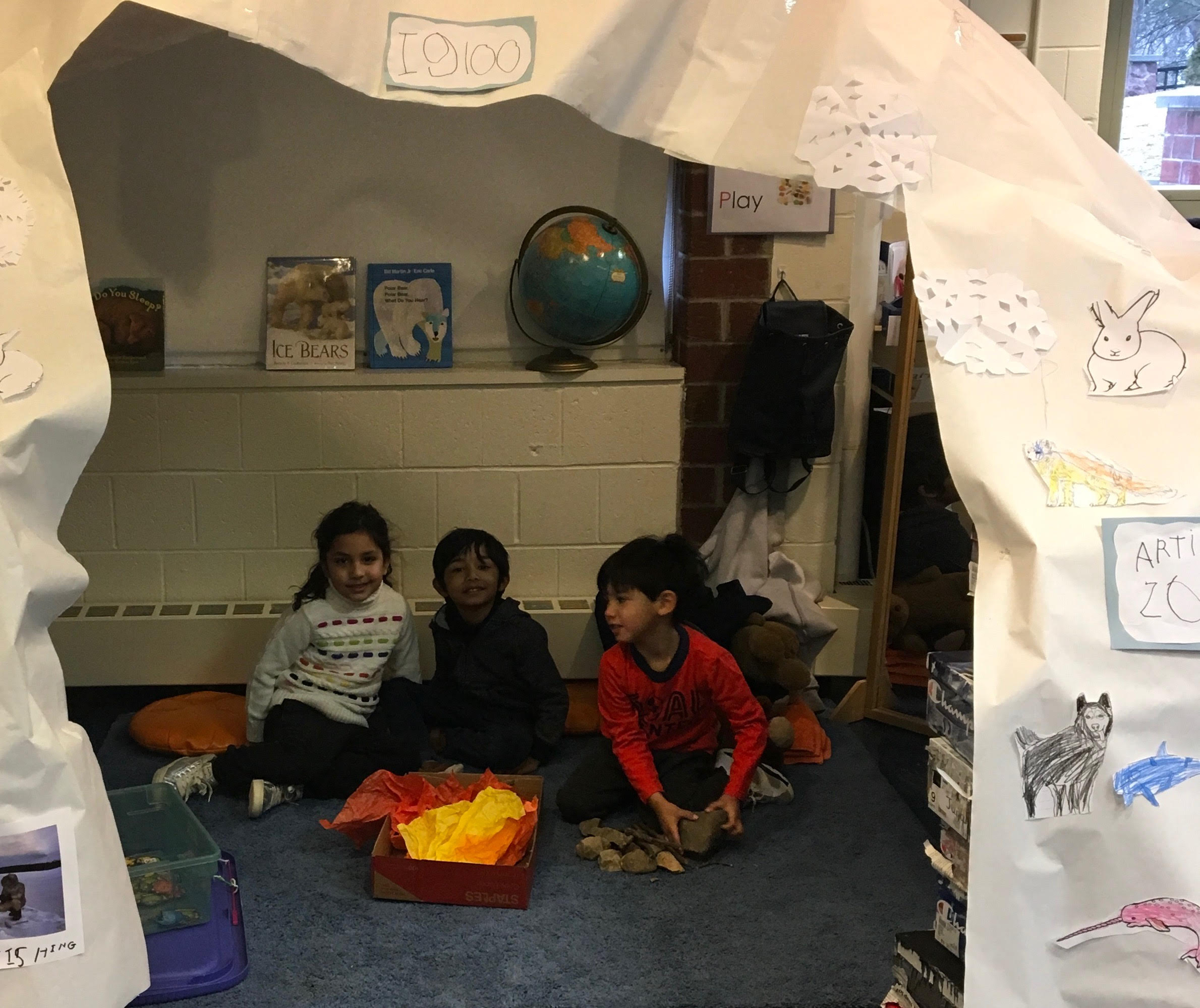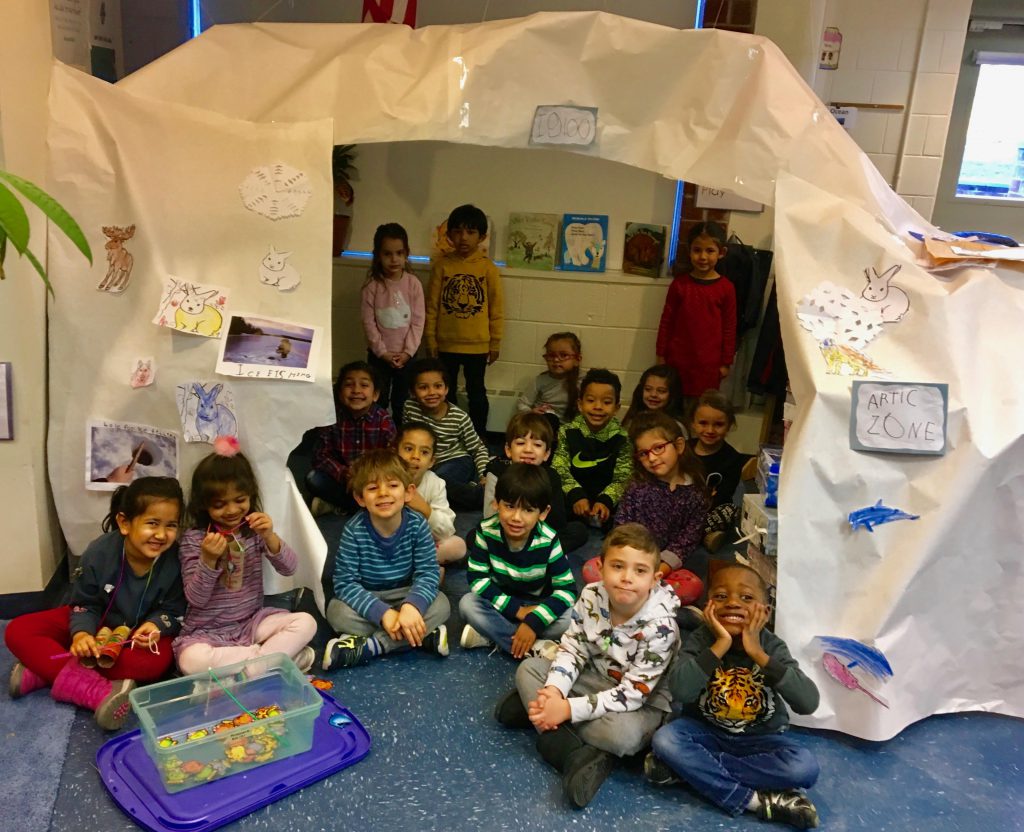
Submitted by Karen Geschwer and Teresa Cali
Inspiration for class activities comes from the children and their interests. In our child-centered Preschool 4 classroom, children are encouraged to learn by selecting activities that spark their curiosity. They learn through hands on exploration; thinking independently and taking ownership and responsibility for making these choices.
Earlier in the year, we read a book entitled, What To Do With An Idea, by Kobi Yamada. This is an enchanting story of a young boy who has an idea. He is puzzled as to where it originated and what to do with it. He decides to be brave and embrace it, which leads to a fascinating journey.
This is the case with preschool 4’s exciting journey as they brainstormed various ways to change the dramatic play area to reflect their interests. Some previous themes in this area have been a restaurant, a doctor’s/veterinarian’s office, a bear cave and a seaside beach resort. There were many discussions about the cold weather we were experiencing during the month of January, which led to conversations and questions about hibernation. The children shared their collective, vast knowledge on these topics and decided it would be fun to transform their dramatic play area into an Arctic zone. They thought about the things that were needed to construct their new habitat and the supplies necessary to live there. Their enthusiasm, creativity and imagination made this Arctic world become a reality.
Children learn many life skills when they role-play in a dramatic play area, including cooperation, collaboration, learning to take turns, conflict resolution, problem solving, negotiation and decision making. They use their expressive language skills to verbalize their ideas, make predictions and socialize with their peers in a comfortable setting. Often, their play mirrors what they have observed or experienced in real life. Another way they share their experiences is through writing activities, such as making drawings and writing books. Being motivated and engaged in their play leads to meaningful, productive and fun learning experiences.
Information the children learned from this experience include:
- geography – North Pole – Northern Lights
- how people live in the cold – where to find shelter – types of clothing worn
- math – calculating the number of blocks of snow (we used shoe boxes) to construct an igloo, as well as how to create a dome shaped roof
- how to build a fire pit (gathering rocks and sticks) to cook food and stay warm
- how to find and prepare food
- equipment needed to live, no cell phones, tv or video games
- the need to be alert to surroundings – how this is also true for where we live
- animals that live in the Arctic
- which animals hibernate, migrate or den
- how animals’ bodies help them to survive
- animal tracks
- science – water/ice experiments
- weather conditions – water cycle
- transportation/travel – dog sledding
- collecting supplies, including medical, needed to survive long cold days
- making binoculars to observe the landscape and search for polar bears, and other important creatures and features
Reference materials used:
- viewing videos about building an igloo, life in the Arctic tundra, ice fishing, marine mammals and the different animals that inhabit this region
- both informational books (Animal Tracks, written and illustrated by Arthur Dorros) and story books, (Hibernation Station, by Michelle Meadows), to name a few

